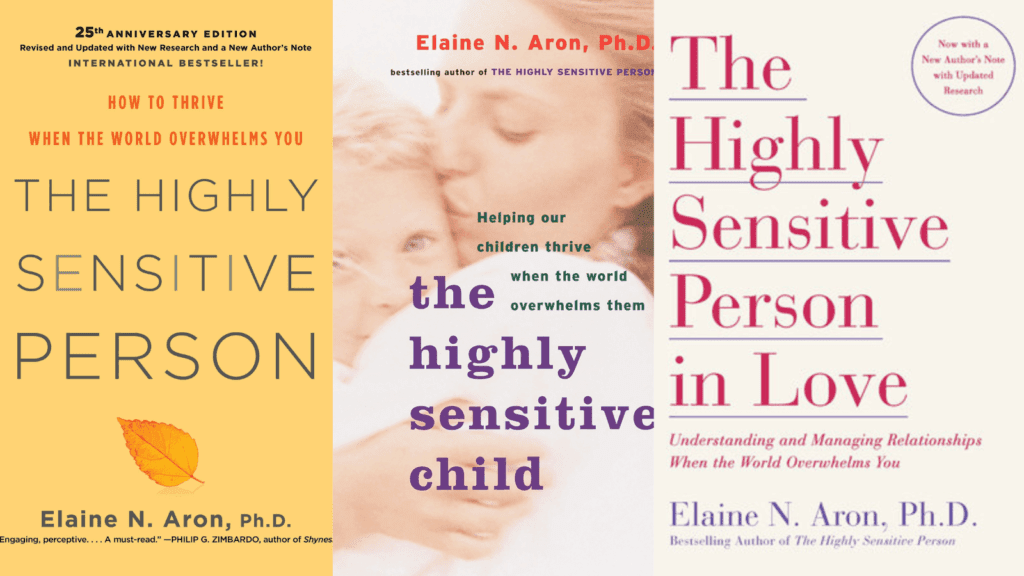In this post, find out the difference between HSP and Autism.
What Is HSP?
HSP stands for Highly Sensitive Person.
It is a term coined by psychologist Dr. Elaine Aron to describe individuals who have a hypersensitive nervous system and are more sensitive to various stimuli, both external and internal.
Highly Sensitive Persons tend to process information more deeply and thoroughly, often exhibiting heightened emotional reactivity and awareness of subtleties in their environment.
Some common characteristics of HSPs include:
1. Sensory sensitivity: HSPs may have heightened sensitivity to sensory stimuli such as bright lights, loud noises, strong smells, or rough textures. They may also be more easily overwhelmed by crowded or stimulating environments.
2. Emotional responsiveness: HSPs tend to experience emotions more intensely than others. They may be more empathetic and emotionally perceptive, picking up on subtle cues and experiencing deep empathy towards others.
3. Rich inner life: HSPs often have a rich and complex inner world. They may be reflective, introspective, and engage in deep thinking and contemplation. They may also have a strong imagination and find solace in creative pursuits.
4. Overstimulation: Due to their heightened sensitivity, HSPs may become easily overwhelmed by too much stimulation or prolonged exposure to demanding social situations. They may require regular downtime and solitude to recharge and restore their energy.
It’s important to note that being an HSP is not a disorder or a condition but rather a personality trait that exists on a spectrum.
Not all sensitive individuals will identify as HSPs, and the degree to which someone is highly sensitive may vary.
However, for those who do identify as HSPs, understanding their trait can offer validation, self-awareness, and strategies for managing and embracing their sensitivity in a world that may sometimes feel overwhelming.
Related: Top 9 Highly Sensitive Person Coping Strategies [HSP’s Survival Guide]
What Is Autism?
Autism, or Autism Spectrum Disorder (ASD), refers to a neurodevelopmental condition that affects social interaction, communication, and behavior.
It is typically diagnosed in early childhood, although symptoms may become more apparent as a child grows older.
Autism is a spectrum disorder, meaning there is a wide range of symptoms and severity levels among individuals diagnosed with ASD.
Some common characteristics of autism include:
1. Social communication difficulties: People with autism often struggle with verbal and nonverbal communication. They may have challenges understanding social cues, maintaining eye contact, and engaging in reciprocal conversation.
2. Repetitive behaviors and restricted interests: Individuals with autism might engage in repetitive movements or actions, such as hand-flapping or rocking back and forth. They may also exhibit intense interests in specific topics and have difficulty transitioning from one activity to another.
3. Sensory sensitivities: Many people with autism experience heightened sensitivity or hypo-sensitivity to sensory stimuli. This can include being overwhelmed by loud noises, bright lights, or certain textures, or seeking out certain sensory experiences.
4. Challenges with social interactions: Difficulties forming and maintaining relationships are common in individuals with autism. They may struggle to understand social norms, have trouble making friends, and find it challenging to engage in group activities.
5. Differences in processing information: Individuals with autism may have unique ways of processing information. They may excel in visual thinking, pattern recognition, and attention to detail, while facing challenges with abstract thinking and understanding others’ perspectives.
While there is no known cure for autism, early diagnosis and appropriate support and interventions can significantly improve outcomes for individuals with ASD.
Applied Behavior Analysis (ABA) therapy, speech therapy, occupational therapy, and social skills training are commonly used interventions that can help individuals with autism develop essential skills and enhance their quality of life.
It’s important to remember that autism is not a disease or something to be “cured.”
It is a different way of perceiving and interacting with the world. Embracing neurodiversity and providing a supportive, inclusive environment can create opportunities for individuals with autism to flourish and reach their full potential.
Related: Autism In Women Symptoms That Are Often Overlooked
HSP vs Autism
Highly Sensitive Person (HSP) and Autism are two distinct concepts related to individual differences in perception and sensory processing.
While there may be some overlapping characteristics, they represent different phenomena.
Here are some key distinctions to consider:
1. Biological Basis
Research suggests that both genetic and environmental factors contribute to the development of autism.
Several specific genes have been linked to autism, affecting brain structure and functioning.
However, no specific genetic markers have been identified for HSPs.
HSP is primarily considered a temperamental trait influenced by a complex interplay of genetic and environmental factors.
2. Social Interaction
Individuals with autism often struggle with social communication and interaction, finding it challenging to understand non-verbal cues, engage in reciprocal conversations, or establish meaningful relationships.
In contrast, HSPs, although potentially more prone to overstimulation, typically have well-developed social skills and empathetic abilities.
Related: Top Resources For Highly Sensitive Person (Tests, Support Groups, Books, Workbooks, Blogs, etc.)
3. Sensory Processing
Both HSPs and individuals with autism may experience sensory sensitivities. However, these sensitivities manifest differently.
For HSPs, sensory overload can lead to temporary overwhelm, requiring rest and solitude to recover.
Individuals with autism, on the other hand, may display more severe and persistent sensory sensitivities that impact their daily functioning and often require more specialized support.
4. Emotional Reactivity
HSPs are known for their heightened emotional responsiveness and empathy.
They may feel emotions more intensely and be more attuned to the feelings of others.
In contrast, individuals with autism may have difficulty understanding and expressing emotions, leading to challenges in emotional regulation and social comprehension.
Related: Best 30 Journal Prompts For Highly Sensitive Person
5. Diagnostic Criteria
Autism diagnosis involves assessing several areas of functioning, such as social communication, restricted or repetitive behaviors, and sensory sensitivities.
Professionals use standardized assessments, behavioral observations, and interviews to diagnose autism.
In contrast, HSP is not officially recognized as a clinical diagnosis but rather as a personality trait assessed through self-report measures.

Conclusion
While both HSP and Autism involve sensory processing differences, HSPs typically have well-developed social skills and emotional empathy, whereas individuals with autism often face significant challenges in these areas.
It is essential to approach these concepts with clarity and avoid conflating or confusing them.
Understanding these differences can help ensure accurate identification, appropriate support, and tailored interventions for individuals experiencing these unique traits.


![Top 10 Qualities Of A Highly Sensitive Person [+Highly Sensitive Person's Survival Guide]](https://ineffableliving.com/wp-content/uploads/2022/02/self-love-3-1024x576.png)
